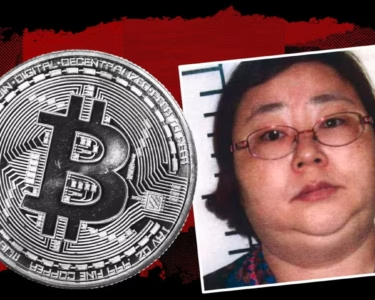In a poignant moment, 277 Ukrainian warriors were reunited with their families on April 19, 2025. This touching event underscores both the human toll and the fleeting glimmers of hope in the ongoing Russia-Ukraine conflict. Their reunion occurred just as Easter celebrations began. The prisoner exchange was one of the largest since Russia’s invasion in February 2022. These Ukrainians, 31 of whom were wounded, were traded for 15 wounded Russian servicemen.
These Russians were in urgent need of medical care. The swap was mediated by the United Arab Emirates. It brought a rare moment of relief to a war-torn nation. However, it was overshadowed by skepticism over a Kremlin-announced Easter ceasefire. The ceasefire rang hollow for many.
The returning Ukrainians, hailing from units that defended key battlegrounds like Kurakhove, Pokrovsk, and Kharkiv, were greeted with emotional reunions. “Mom, I love you so much, I’ve missed you so much!” one soldier exclaimed, as captured in a video shared by @Gerashchenko_en on X. Ukrainian President Volodymyr Zelenskyy called the release “one of the best pieces of news.” He pointed out that this raised the total number of people freed from Russian captivity.
Since the war began, the total has reached 4,552. These warriors included members of the Armed Forces and National Guard. The group also encompassed border guards. They had endured captivity after defending regions like Mariupol and Donetsk. Yet, even as families embraced their loved ones, the broader context of the exchange revealed a conflict far from resolution.
The swap coincided with a unilateral Easter ceasefire. It was announced by Russian President Vladimir Putin. The ceasefire was set to last from 6:00 PM on April 19 to midnight on April 21. The Kremlin framed it as a humanitarian gesture. Putin cited “humanitarian considerations” in a televised meeting with General Valery Gerasimov. However, the announcement was met with deep mistrust in Ukraine. Air raid sirens blared across parts of Ukraine just 15 minutes before the ceasefire was to take effect. This was reported by Jürgen Nauditt (@jurgen_nauditt) on X. A map came with the post and showed alerts in regions like Sumy and Kharkiv. User @RichardUkr noted that drones and KAB threats were already in action. Zelenskyy dismissed the ceasefire. He described it as “yet another attempt by Putin to play with human lives.” He pointed out that Russian drones were active over Kyiv even as the truce was supposed to begin.
This skepticism is not unfounded. Ukrainian officials and commentators, like journalist Yuriy Butusov, criticized the lack of monitoring mechanisms in Putin’s ceasefire declaration. They warned that such truces often devolve into firefights. Russia is quick to blame Ukraine for violations. The Ukrainian air force reported 87 Russian drones and decoys launched overnight into Saturday.
They intercepted 33 drones. Additionally, 36 were likely jammed. Meanwhile, in Kherson, regional head Oleksandr Prokudin reported strikes just hours into the supposed truce. A high-rise building was set ablaze. In Zaporizhzhia, a drone attack injured a civilian. These incidents paint a grim picture of a ceasefire that exists more on paper than in practice.
The prisoner exchange itself, while a moment of humanity, also highlights the stark asymmetry of the conflict. Russia’s Ministry of Defense claimed 246 of its servicemen were returned, a figure that contrasts sharply with Ukraine’s 277. This discrepancy echoes earlier exchanges. One such exchange was reported by @BowesChay on April 18.
Russia handed over 909 bodies of Ukrainian servicemen in exchange for just 41 Russian bodies. This is a grim reminder of the catastrophic losses Ukraine has endured. The UAE’s role as mediator has been a consistent thread in these swaps. The Gulf state has facilitated exchanges since at least January 2024. In that month, 230 prisoners were swapped on each side.
Behind the scenes, the exchange and ceasefire come at a critical juncture in the war. U.S. President Donald Trump has been pushing for peace negotiations. He claims they are “coming to a head.” However, both sides’ intransigence has frustrated his efforts. Last month, Trump proposed a 30-day truce. Ukraine accepted the proposal, but Russia rejected it.
This led to limited pauses in attacks on energy targets. Both sides accuse each other of violating these pauses. Washington has warned it may abandon peace talks. It requires Moscow and Kyiv to show serious intent. This warning may have prompted Putin’s ceasefire gesture. Yet, as Zelenskyy reiterated, Ukraine will only mirror a “full and unconditional ceasefire,” a condition Russia has not met.
The broader battlefield dynamics add another layer of complexity. Russia claims to have retaken nearly all of the Kursk region—99.5% of the territory, according to Gerasimov—following Ukraine’s surprise incursion last year. Ukraine, however, insists it still holds positions there. Zelenskyy states that Ukrainian forces are “holding their positions.” This effort aims to prevent Russian offensives on regions like Sumy. These territorial struggles underscore the high stakes of any potential peace deal. Ukraine aims to use captured Russian land as leverage in negotiations.
For now, the return of 277 Ukrainian defenders offers a bittersweet Easter gift. It is a moment of joy amid a war that shows no signs of abating. Zelenskyy promised to continue searching for all those still in captivity. The question remains: can such exchanges pave the way for lasting peace? Or are they merely fleeting reprieves in a conflict defined by mistrust and violence? For the families reunited this Easter, the answer matters less than the embrace of their loved ones. But for Ukraine and the world, the path to peace remains as elusive as ever.







1 Comment